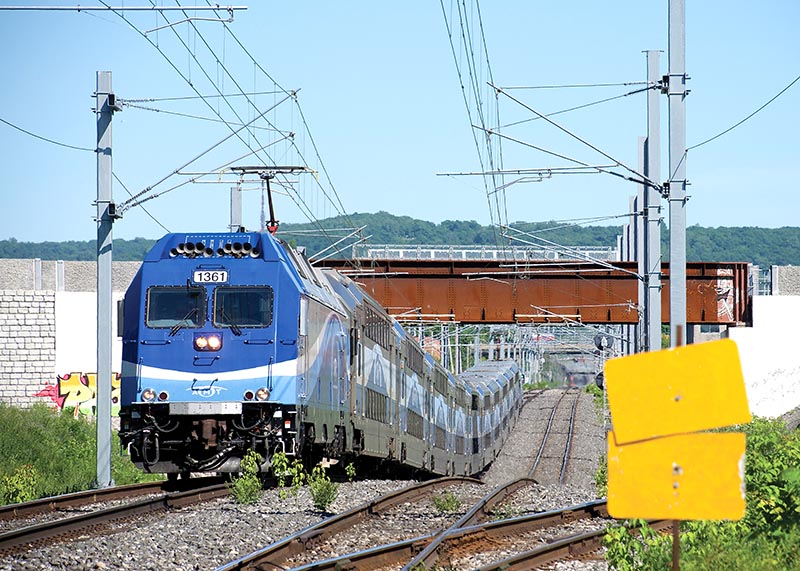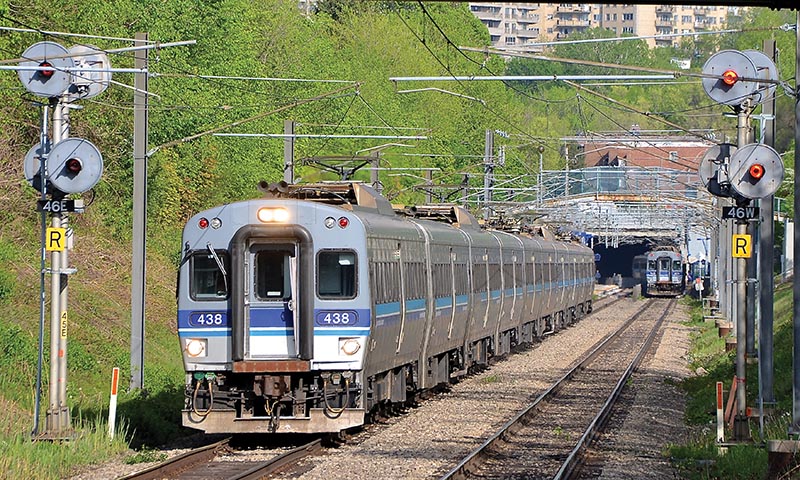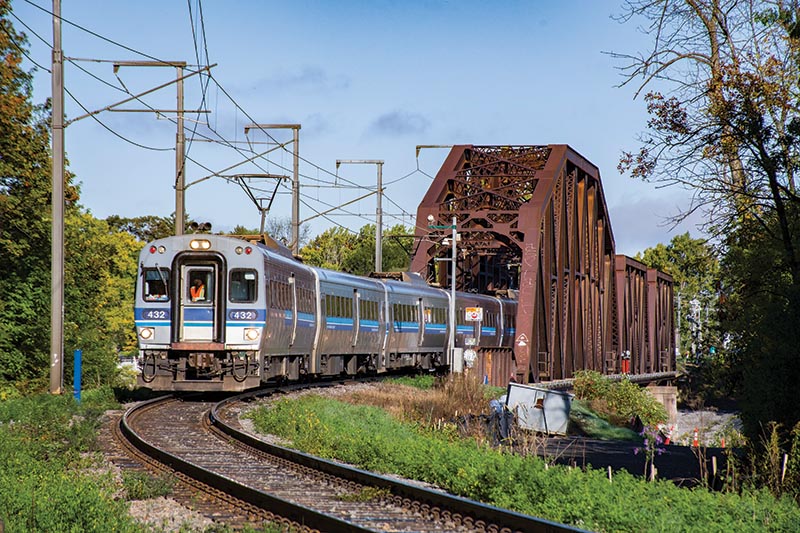 By Michael Berry and Gregory Grice/photos as noted
By Michael Berry and Gregory Grice/photos as noted
The Deux-Montagnes Line out of Montreal, Que., has a storied history that will soon see dramatic change. Canada’s only heavy rail electrified passenger line is set to be converted to light rail within a couple of years, with drastic changes already taking place.
When the upstart Canadian Northern Railway (CNoR) was looking to reach downtown Montreal (Canada’s biggest city at the time), the direct routes from the west had been taken by the already established Canadian Pacific and Grand Trunk, and development had blocked any other railway lines from entering downtown Montreal from the west. CNoR decided to build a tunnel under 769-foot-high Mount Royal; work began in 1912 and the tunnel was bored in 1913. Due to both CNoR’s financial issues and World War I, the tunnel was not completely finished until December 1916, and the first regular train left downtown Montreal for Ottawa and Toronto on October 21, 1918. CNoR would eventually become part of Canadian National Railway in 1923.
Electrified Since the Beginning
Since it first opened for service, the line through the tunnel has been electrified. By 1925, electrification had been extended to St.-Eustache-sur-le-lac on the north shore, now the site of the Grand Moulin station. This station was named Deux-Montagnes until 1995; the current Deux-Montagnes station is another 1.4 miles past the Grand Moulin station. The electrification was 2,400-volt d.c. until the early 1980s, when it was upgraded to 3,000-volt d.c. Motive power originally consisted of six General Electric boxcabs built between 1914 and 1917; these were supplemented later on by nine English Electric boxcabs which CN acquired from the Harbour Commissioners of Montreal Railway in a trade for steam switchers in 1942. In 1950, CN added three GE steeplecabs to its electric roster.

RTM Train 941 is approaching Montpellier station as it ducks under the CN St.-Laurent Sub on June 22, 2018. Up until about five years ago there was a diamond at this location (Eastern Junction). This train has dual-mode ALP-45DPs at each end. Michael Berry photo
Predominantly Passenger
The tunnel has always been passenger-only and the entire Deux-Montagnes line has always been predominantly a commuter line, though local freights ran on part of the line until summer 2018. While passenger trains used this line to reach Ottawa and Toronto during the short period it was under CNoR control, the line has almost entirely been used for commuter trains bringing people from the suburbs to downtown Montreal and back; currently, it is the commuter rail line with the most passengers in the Montreal area.
Big Changes
Canadian National wanted out of the commuter train business, going at least as far back as 1971 when it filed a plan with the Canadian Transport Commission to abandon the Mount Royal Tunnel. Starting in 1982, CN operated the line for the Société de transport de la communauté urbaine de Montréal
(STCUM) under a 10-year contract.
In 1992, a complete rebuilding of the entire line was announced, involving new electrification, new stations, new tracks, and a new signal system. Trains were replaced by buses during the summers of 1993–95 while work took place on upgrading this busy line. The antiquated motive power and rolling stock were replaced by a fleet of 58 Bombardier-built multiple-unit cars (class MR-90) which entered service in October 1995 and still operate today.

AMT Train 949 is approaching Mont-Royal station while AMT 950 slips into the Mount Royal Tunnel in the distance on May 14, 2015. Michael Berry photo
A number of the GE boxcabs were preserved, but unfortunately, none of the English Electric ones were. Many of the m.u. passenger cars which were in use on the line before 1995 have found second homes on tourist railways. A pair has found a home near Montreal at Exporail in St.-Constant, Que., along with boxcab CN 6711. Boxcab CN 6710 is preserved not too far from the line in Deux-Montagnes; until fall 2019, it was found beside the Deux-Montagnes station but construction necessitated a move to this new location farther away from the tracks.
Summer 1995 was the last of three summer “line upgrade” shutdowns of the Deux-Montagnes Line. This would be the last major project performed by STCUM; on January 1, 1996, the Deux-Montagnes Line was transferred to the Agence Métropolitaine de Transport (AMT). Under the AMT, several projects took place that helped increase service and efficiency on the line…


